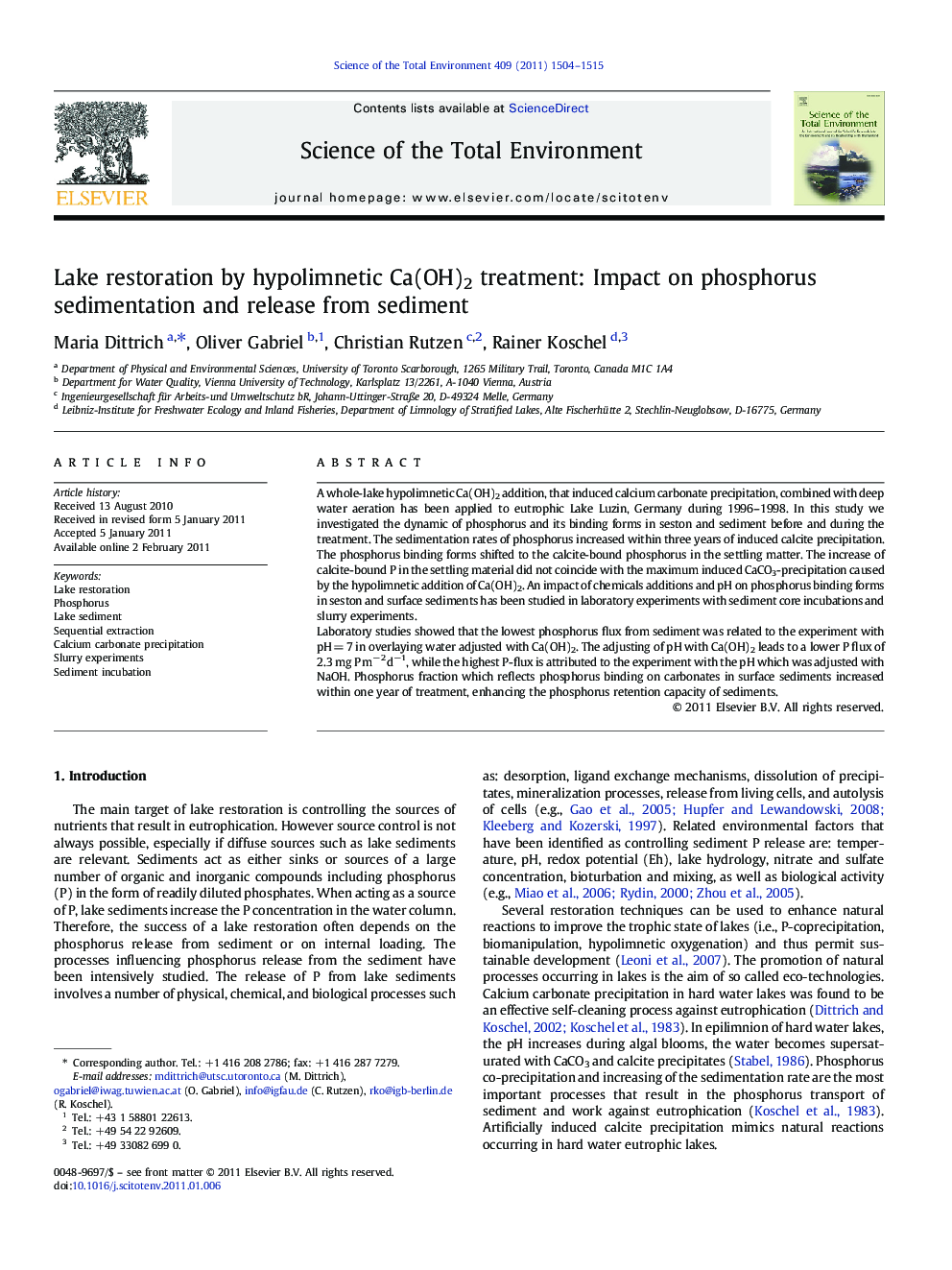| Article ID | Journal | Published Year | Pages | File Type |
|---|---|---|---|---|
| 4430861 | Science of The Total Environment | 2011 | 12 Pages |
A whole-lake hypolimnetic Ca(OH)2 addition, that induced calcium carbonate precipitation, combined with deep water aeration has been applied to eutrophic Lake Luzin, Germany during 1996–1998. In this study we investigated the dynamic of phosphorus and its binding forms in seston and sediment before and during the treatment. The sedimentation rates of phosphorus increased within three years of induced calcite precipitation. The phosphorus binding forms shifted to the calcite-bound phosphorus in the settling matter. The increase of calcite-bound P in the settling material did not coincide with the maximum induced CaCO3-precipitation caused by the hypolimnetic addition of Ca(OH)2. An impact of chemicals additions and pH on phosphorus binding forms in seston and surface sediments has been studied in laboratory experiments with sediment core incubations and slurry experiments.Laboratory studies showed that the lowest phosphorus flux from sediment was related to the experiment with pH = 7 in overlaying water adjusted with Ca(OH)2. The adjusting of pH with Ca(OH)2 leads to a lower P flux of 2.3 mg P m−2 d−1, while the highest P-flux is attributed to the experiment with the pH which was adjusted with NaOH. Phosphorus fraction which reflects phosphorus binding on carbonates in surface sediments increased within one year of treatment, enhancing the phosphorus retention capacity of sediments.
Research Highlights► An Ca(OH)2 addition and deep water aeration has been applied to an eutrophic lake. ► The phosphorus (P) and its binding forms in seston, sediment have been investigated. ► The adjusting of pH with Ca(OH)2 in bottom water leads to a lower P flux. ► Phosphorus HCl-fraction increased in surface sediments within 1 year of treatment. ► This fraction reflects P binding on carbonates and enhances the P retention.
